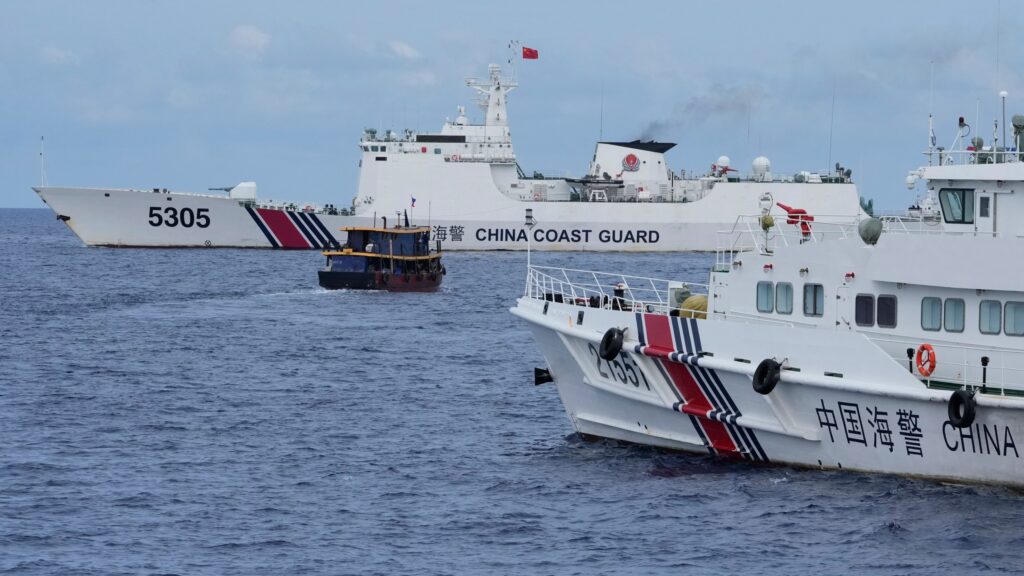This content explores the topic of coastal defense and the importance of strategic naval maneuvers in mastering this art. It describes coastal defense as the protection of a nation’s coastal areas through the use of naval forces and fortifications. The content then delves into different strategic naval maneuvers such as coastal patrols, amphibious assaults, mobile defense, mine warfare, and anti-ship missiles, outlining their significance in coastal defense strategies. The article emphasizes the need for coordination and planning between various military branches and regular training to enhance coastal defense capabilities. It concludes by emphasizing the importance of coastal defense in safeguarding national security.
Mastering the Art of Coastal Defense: Strategic Naval Maneuvers
Introduction
Coastal defense is a critical aspect of military strategy, especially for countries with extensive shorelines. The ability to protect coastal territories and deny access to enemy forces is of utmost importance. Strategic naval maneuvers play a significant role in mastering the art of coastal defense. This article delves into the various tactics and techniques employed in coastal defense, highlighting the importance of planning and coordination.
Understanding Coastal Defense
Coastal defense refers to the protection of a nation’s coastal areas from potential threats by utilizing naval forces and fortifications. It involves a combination of land-based defenses, such as coastal artillery and missile systems, and a strong naval presence to deter and counter enemy incursions. However, effectively mastering coastal defense requires more than just firepower; it demands strategic maneuvers that exploit the inherent advantages of naval forces.
Strategic Naval Maneuvers
Strategic naval maneuvers are essential in coastal defense as they provide a combination of offensive and defensive capabilities. Here, we discuss some key maneuvers that can give a nation an edge in protecting its coastal territories.
1. Coastal Patrols
Coastal patrols involve the regular deployment of naval assets to monitor and secure the country’s territorial waters. These patrols help in identifying and deterring potential threats, including enemy submarines, surface vessels, or unconventional forces attempting to infiltrate the coastline. Coastal patrols play a vital role in maintaining situational awareness and acting as a deterrent against hostile actions.
2. Amphibious Assaults
While primarily considered an offensive maneuver, amphibious assaults can also be part of a coastal defense strategy. By conducting pre-emptive strikes on enemy beachheads or landing zones, coastal defenders can disrupt enemy offensive operations and prevent the establishment of a foothold on their shores. Amphibious assaults require careful planning, coordination, and the element of surprise to be effective.
3. Mobile Defense
Mobile defense refers to the ability of coastal defense forces to swiftly react and counter enemy incursions along the coast. It involves the deployment of fast and agile naval assets, such as patrol boats, frigates, and helicopters, to respond quickly to any breach in coastal defenses. Mobile defense tactics focus on intercepting and neutralizing enemy forces before they can consolidate their position on the coast.
4. Mine Warfare
Mines are an effective and relatively low-cost means of coastal defense. By deploying sea mines strategically, coastal defenders can create barriers and chokepoints, denying access to enemy vessels and forcing them to divert from desired routes. Mines can be laid in shallow waters near coastlines or in deeper waters to hinder larger naval formations. Effective mine warfare requires regular monitoring and updating of minefields to ensure their continued effectiveness.
5. Anti-ship Missiles
Anti-ship missiles provide a potent defensive capability in coastal defense. By deploying missile systems along the coast, defenders can target and engage enemy naval vessels at extended ranges. These missiles can be land-based or launched from naval platforms, providing a versatile and mobile defense capability. Anti-ship missile systems must be integrated with robust reconnaissance and target acquisition networks to maximize their effectiveness.
Coordination and Planning
Mastering coastal defense requires a high level of coordination and planning between various branches of the military, including the navy, air force, and ground forces. This coordination involves joint exercises, intelligence sharing, and the establishment of effective command and control structures. Additionally, regular training and simulations are crucial to test and refine coastal defense strategies, ensuring preparedness in case of an actual threat.
Conclusion
Mastering the art of coastal defense is vital for any nation with a significant coastline. It demands a combination of land-based defenses and strategic naval maneuvers. By understanding the importance of coastal patrols, amphibious assaults, mobile defense, mine warfare, and anti-ship missiles, coastal defenders can enhance their ability to protect their shores. Ongoing coordination, planning, and training are fundamental in maintaining an effective coastal defense capability, deterring potential adversaries, and safeguarding national security.
